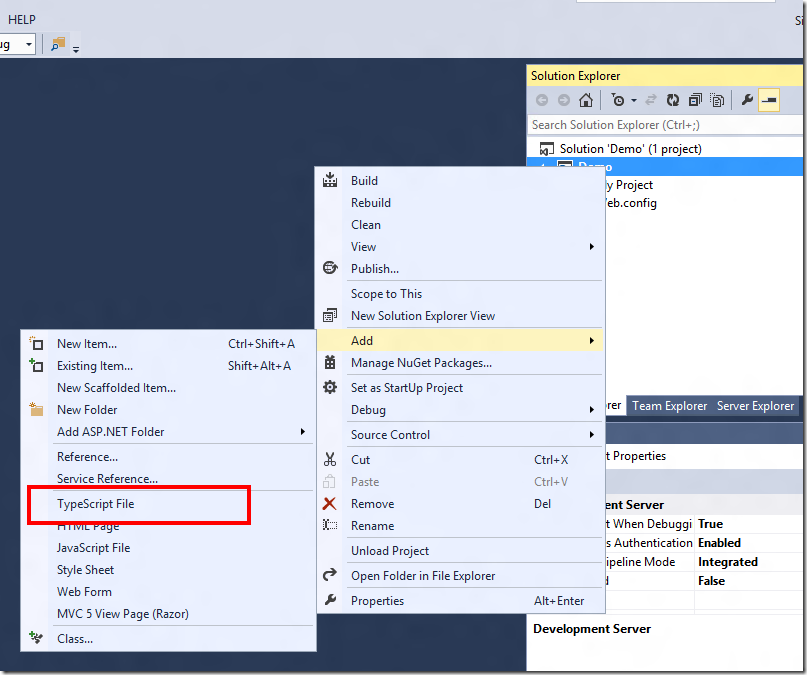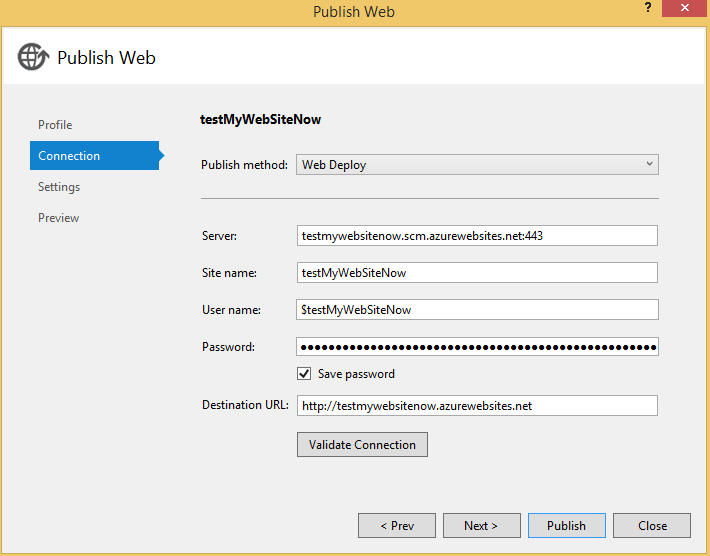Visual Studio Express is a great free web development tool.
- Transfer
Quite often and with pleasure I attend conferences on web development. At the last JSConf US, I met a huge number of developers who showed me how to easily create websites using Visual Studio 2013.
Many of them said that they were completely not familiar with all the features of the free version of Visual Studio Express. But even in free form VS Express is good. Let's look, starting with the installation process itself, on what is available in Visual Studio Express.
For those who prefer video tutorials, the material is available at the following link .
Install Visual Studio 2013 Express Edition
First of all, you need to go to the Visual Studio 2013 Express website: http://www.visualstudio.com/en-us/products/visual-studio-express-vs.aspx
Here are the various options for Visual Studio. Choosing the appropriate version depends on what you are going to do.
For web developers, choose Express 2013 for the Web: http://www.visualstudio.com/downloads/download-visual-studio-vs#d-express-web
Supported operating systems:
- Windows 7 SP1 (x86 and x64)
- Windows 8 (x86 and x64)
- Windows 8.1 (x86 and x64)
- Windows Server 2008 R2 SP1 (x64)
- Windows Server 2012 (x64)
- Windows Server 2012 R2 (x64)
To install, you need a little more than 1.17 GB of hard disk space:

As soon as the installation is complete, you can start Visual Studio 2013 Express and get started:
Creating a frontend website from scratch
One of the main steps in creating a website is to set up a web server to publish your site files.
Setting up a web server with Visual Studio 2013 Express is very simple. You must create a folder and specify it in File => Open Web Site: Visual Studio will automatically create a web server in the specified folder. Note that you can also specify the local IIS (Internet Information Server) or FTP server. There is no need to separately install a web server, Tomcat, node or something else. Now, let's say I want to add a regular HTML file to the project. To do this, right-click on my site in the solution explorer and select Add => New Item => Html Page:
Obviously, Visual Studio supports HTML / CSS / JS files, and also implements syntax highlighting and IntelliSense for them: We will successfully perform the same actions with the JavaScript file: In order to add a link to this file from your HTML page, you just need to move it in the solution explorer. And, as I mentioned above, you also get all the delights of IntelliSense for the JavaScript file: With Visual Studio, you do not need to configure the web server because everything has already been done for the developer. Just click on the button and Visual Studio will launch the selected browser (one of the installed on your computer):

Visual Studio independently creates a local web server on localhost using a free port (here 2013), which is quite convenient for the developer.
Using "Breakpoints" is just as simple - just click on the fields or use F9 to set a point, and then start debugging: Also, to debug your site, you can use the variable window, call stack, console and much more.
Version control systems
Visual Studio Express versions support interaction with both TFS (Team Foundation Server) and Git: you can easily clone, fork, execute or send code to the selected system without leaving the IDE.
TypeScript
Perhaps you know that I am a big fan of TypeScript (if not, you can read my article about why we decided to port babylon.js from JavaScript to TypeScript ) The
good news is that when you install Visual Studio 2013 Update 2 , TypeScript is supported Visual Studio is added for free.
Now you can add a TypeScript file to your project: It is obvious that IntelliSense is also supported for TypeScript, and much more, for example, a drop-down list offering a choice of available functions: Debugging also works fine - thanks to the code map files generated by TypeScript.


Publish a website in Azure
By tightly integrating the environment with Azure, a developer can create and publish a website directly from Visual Studio without having to go to the Azure portal. Also, with these VS features, you can debug a website directly in the cloud.
Right-click on the assembly of the project in the solution explorer and select Publish Web Site:

Select the publication of the site using Microsoft Azure Websites:

Log in and create a new instance of the website in Azure:

In the next dialog box “Create a website in Azure” you will need Select the resources you want to create:

After clicking the “Create” button in the web publishing wizard window, you will be given the opportunity to test the connection to make sure that Visual Studio can connect to Azure to deploy the web project:

Click “Publish” and, after successful deployment, the URL of the published web the site automatically opens in the browser, and the created web site is now published in the cloud and is accessible from the Internet:

Conclusion
You saw how quickly you can get started with Visual Studio and create a frontend for your site. The features described in this article are just a fraction of what you can do with Visual Studio Express. I myself use it for all stages of development - from editing text to writing code in C # / Python / JavaScript / TypeScript.
Below is a list of supported files: In conclusion, I would like to advise you to give the free version a chance and try Visual Studio Express. You will not be disappointed.

useful links
- Try Azure for 30 days for free!
- Microsoft Azure Development Center (azurehub.ru) - scripts, guides, examples, development recommendations
- Twitter.com/windowsazure_ru - Latest Microsoft Azure News
- Microsoft Azure Community on Facebook - Experts, Questions
- Learn Microsoft Cloud and Other Virtual Academy courses
- Business and the cloud: best practices solutions
- Windows 8.1 Update for large organizations. Beginning of work
- Microsoft Hybrid Cloud: Sample Guide
- Toolkit for Preparing Users for Windows 8.1
- Introduction to the Win2D Graphics Library
- Download Free or Trial Visual Studio
- Become a Universal Windows Developer
